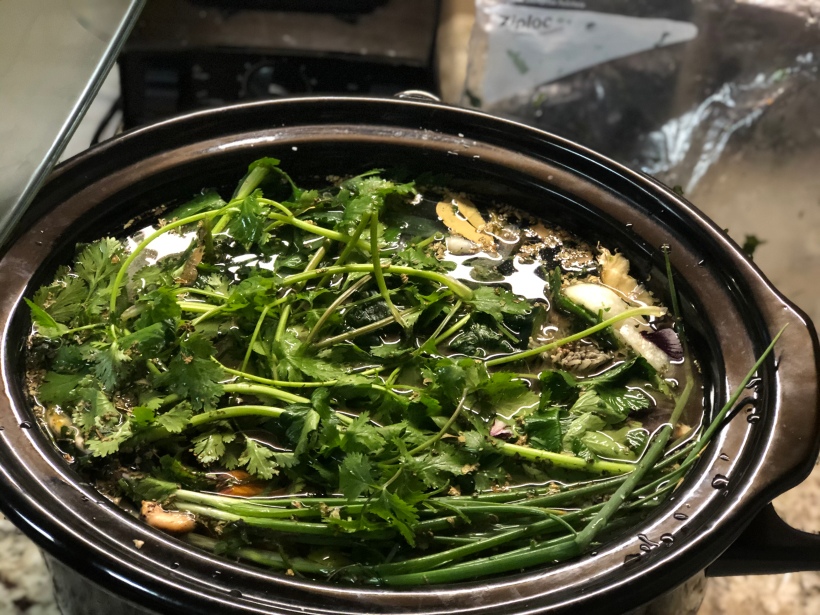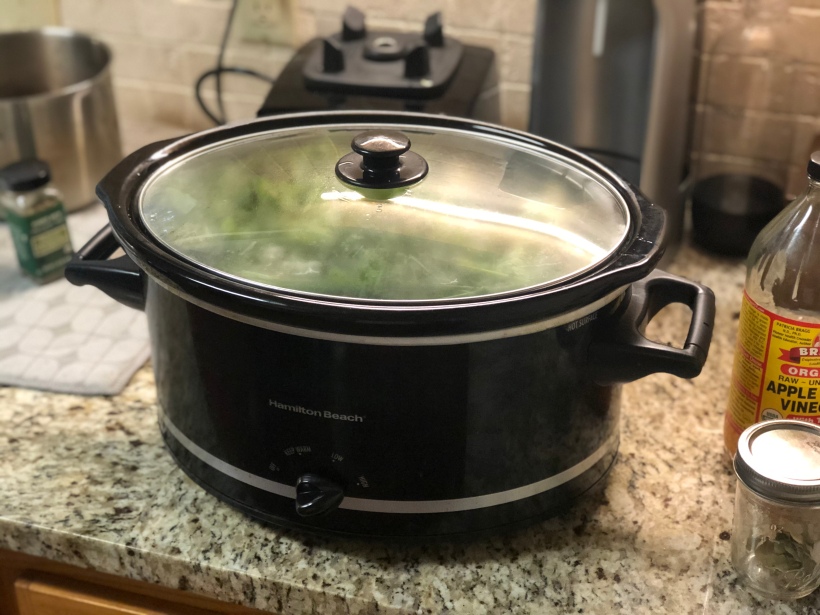When cooking at home, how often do you throw out the tops of your carrots, the potato skins, the tips of your zucchini, or the roots and bulbs of your onions?
If you ever make quinoa, rice, beans, or sauces then you need to keep reading about how to elevate your dishes and reduce food waste at the same time.
All of that nutrition and flavor from the “scraps” can be used to make an amazing vegetable or a vegetable/bone stock.
Today I will share a super easy and incredibly rewarding way to reduce waste and make your other dishes even better.
How to prepare your stock
If you’re like most people, when you are preparing your meals, you are most likely cutting the ends off of your vegetables, peeling skins, and throwing out stems.
Instead of dumping all that nutrition in the garbage (or hopefully composting), I want to encourage you to save them! Put your scraps in a freezer bag and keep adding to it until the bag is full.
If you are eating meat, save the bones, the cartilage and skins and freeze them as well. All of this can be used to make stock and enhance the flavors of your meals.
Benefits of making your own homemade stock instead of buying at the store.
So first things first, the homemade stock just tastes way better than what you are buying at the store. When you cook at home, you are using ingredients that you enjoy eating, which means your stock will only be made from things you like the flavors of.
Next, you’re able to cut down on waste. Sure you’re not going to save the planet when you don’t throw away your scraps, but making the conscious effort to reduce waste is a great thing.
Another benefit is your ability to control the sodium. Most store-bought stock/broth is filled with sodium and the low-sodium versions can be bland. Making your own allows you to salt for flavor and dietary preferences.
Finally, your house will smell great! The aroma from all of the vegetables and herbs will light up your house and remind you of grandma’s 🙂
Ways to use the stock
For me, the number of ways to use homemade stock is endless. But here is a list of 8 things you can do with your stock. If you want recipes for any of them, leave a comment below or DM me on Instagram!
- Make soup!
- Making quinoa (replace water with your homemade stock- you’ll never think of quinoa as bland again)
- Elevate your rice
- Make a tomato sauce
- Cook dry beans
- Replace the cream in your mashed potatoes
- Braise meat or leafy green vegetables
- Drink it as a hangover cure!
The recipe!
So the number 1 rule for making homemade stock is to remember this is not an exact science. If you are saving scraps from things you like, the stock will taste good.
Here are some types of scraps I like to collect:
- Chicken bones,
- Ends and skin of butternut squash
- Sweet potato skins
- onion with the peels
- garlic with the skin
- Apple cores
- Eggplant scraps
- Tops of leeks
- Lemon rind
- Ends of yellow squash
- Carrot peels, ends and stems
- Celery tops
- Any fresh herbs you have around (basil, cilantro, parsley, rosemary)
- Dried bay leaves
- Other dried green herbs that you enjoy
Keep these things in a freezer bag until you are ready to cook your stock!
Directions:
- When you’re ready to make the stock, add all the frozen scraps and bones to a crockpot with your dried and fresh herbs and a little bit of salt and pepper to taste. (Tip: don’t over-salt! You can always add more salt when making the final dish)

- Pour in about a tablespoon of apple cider vinegar (this helps break down the bones and release the collagen from the bones.
- Cover all of the scraps and bones with water.

- Turn crockpot on high for about 5 hours.

- Turn crockpot to low for 1 more hour. (You’ll know it’s ready when the vegetable scraps have lost most of their color and if there is raw meat, be sure that it is cooked all the way through – after 5 hours this should not be an issue.)
- Remove all of the chunky scraps and strain your stock.
- Store in glass jars and freeze until you are ready to use them!
